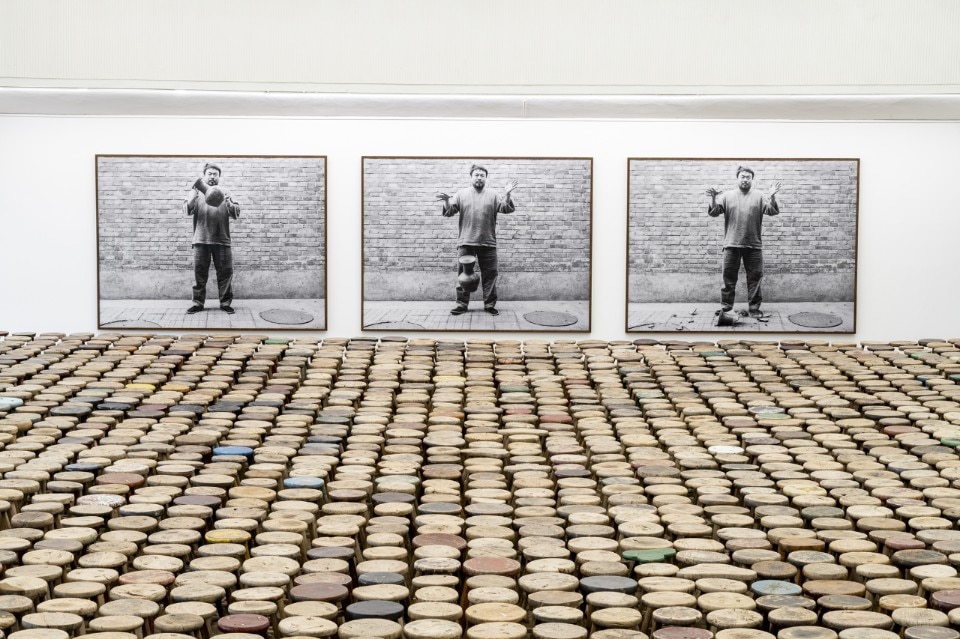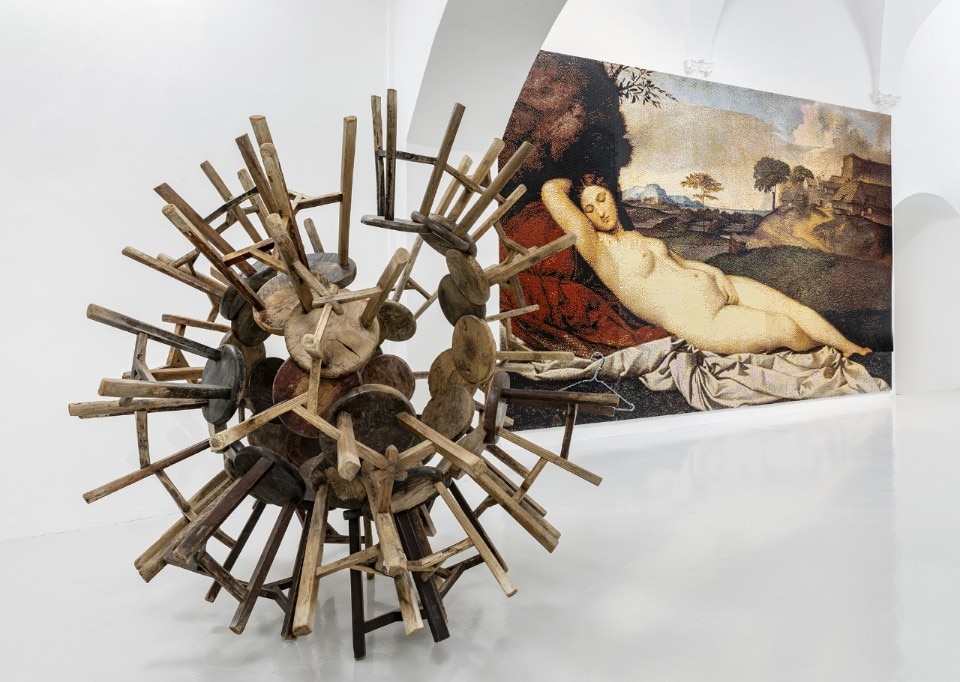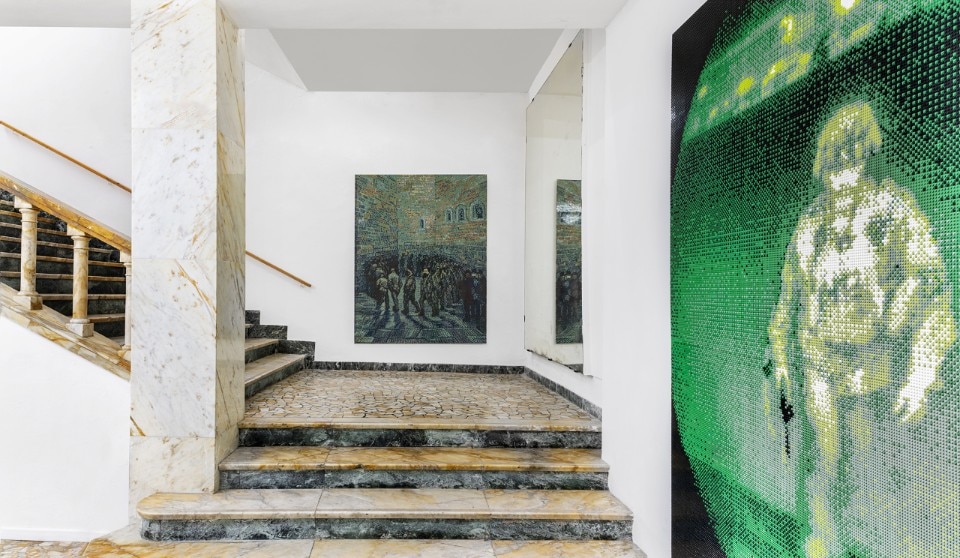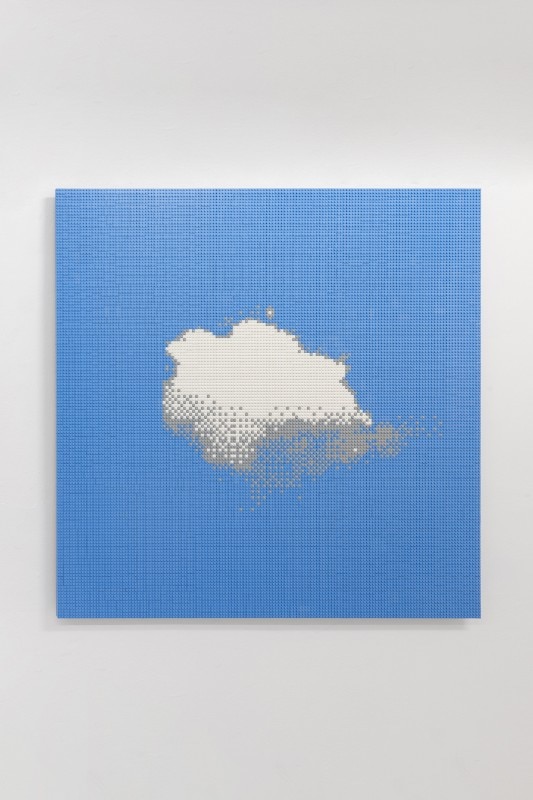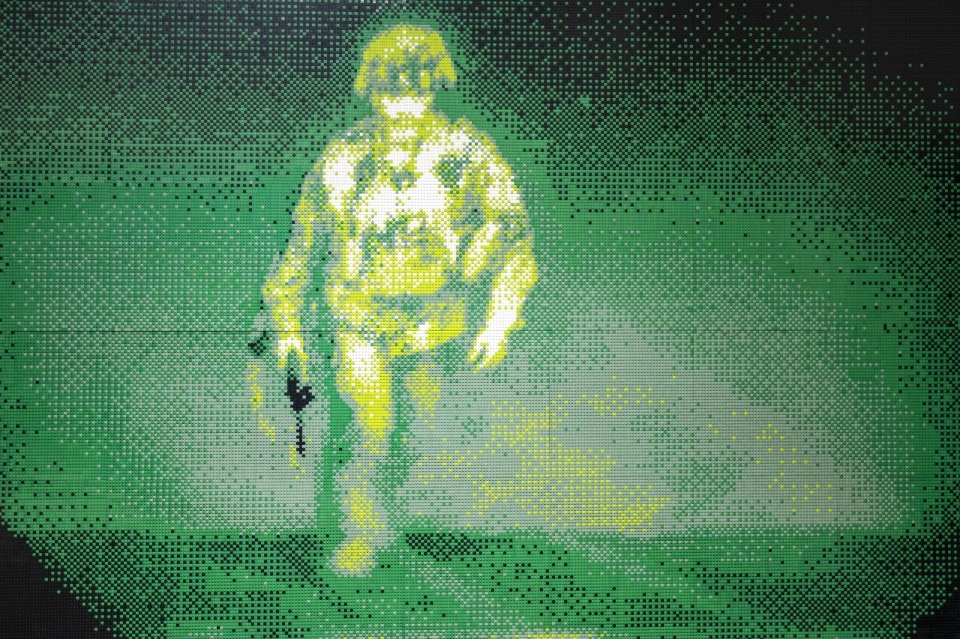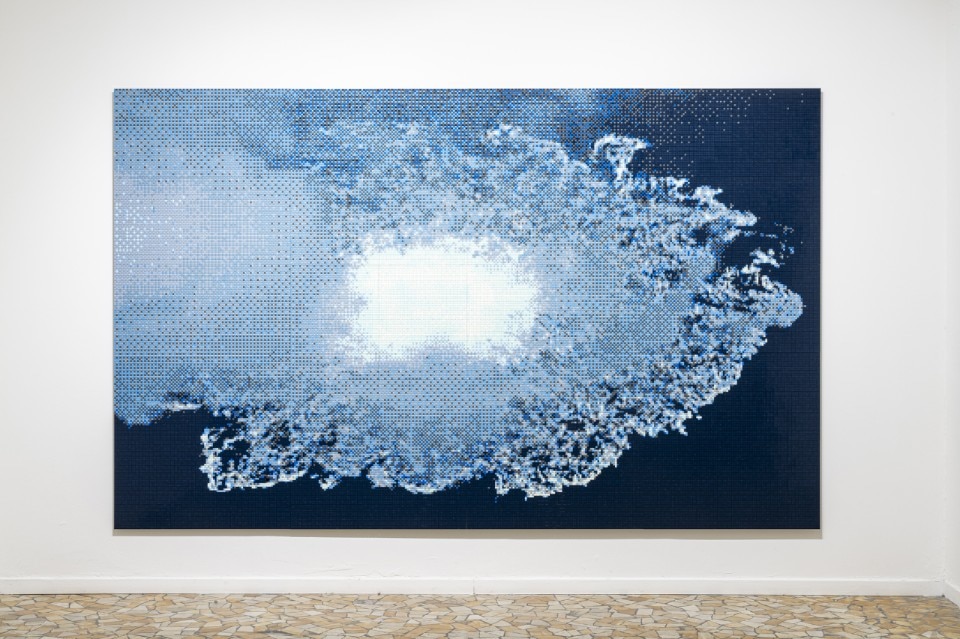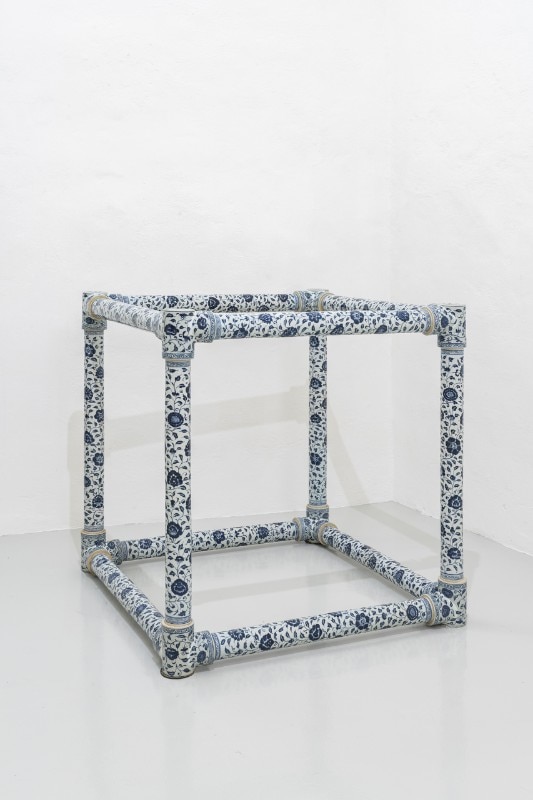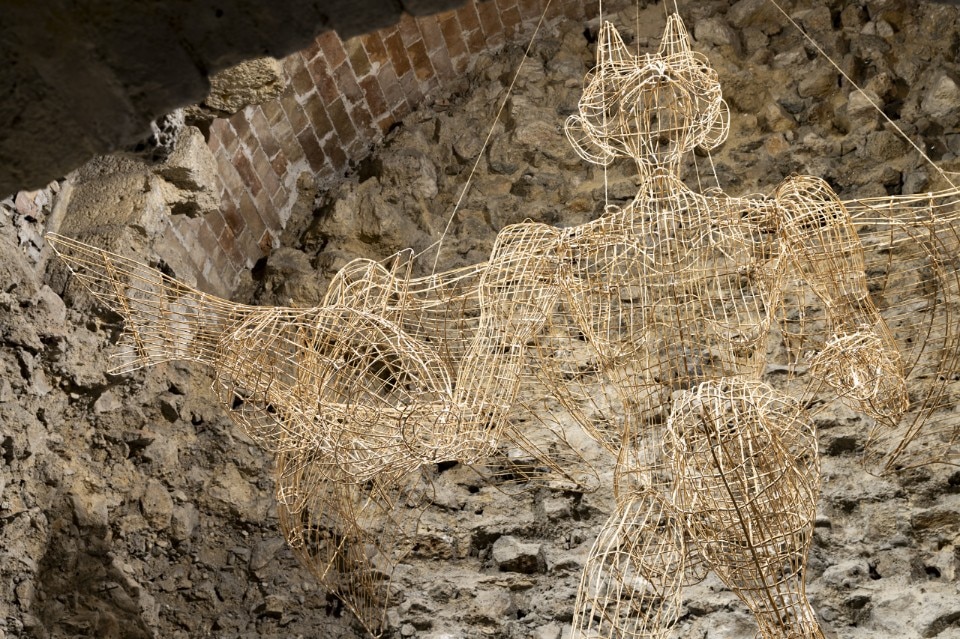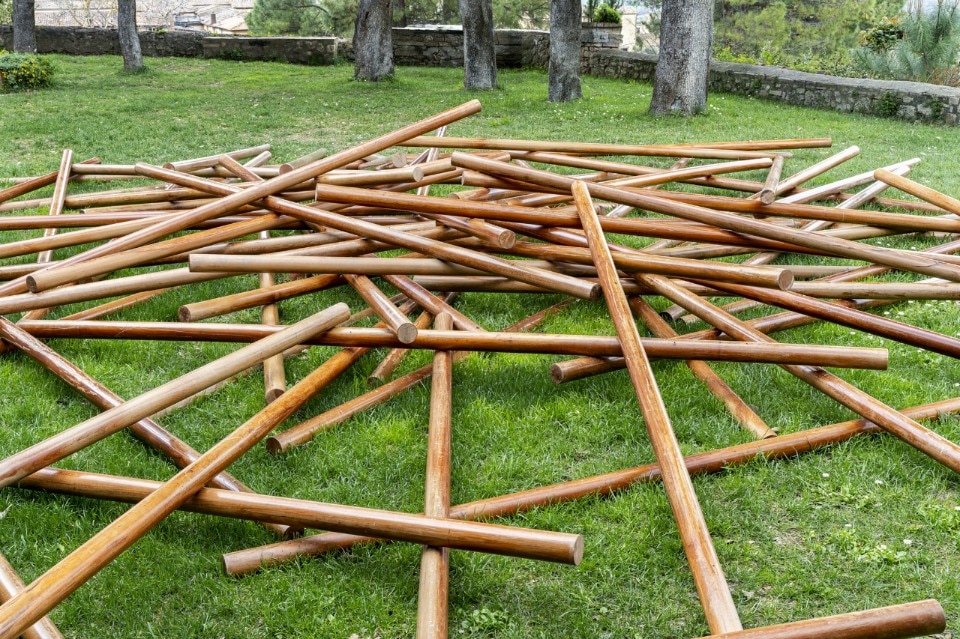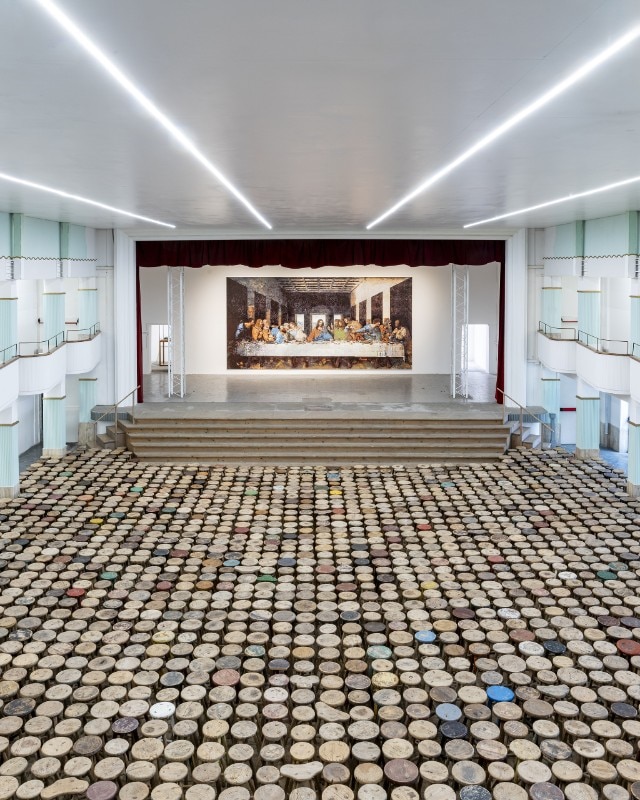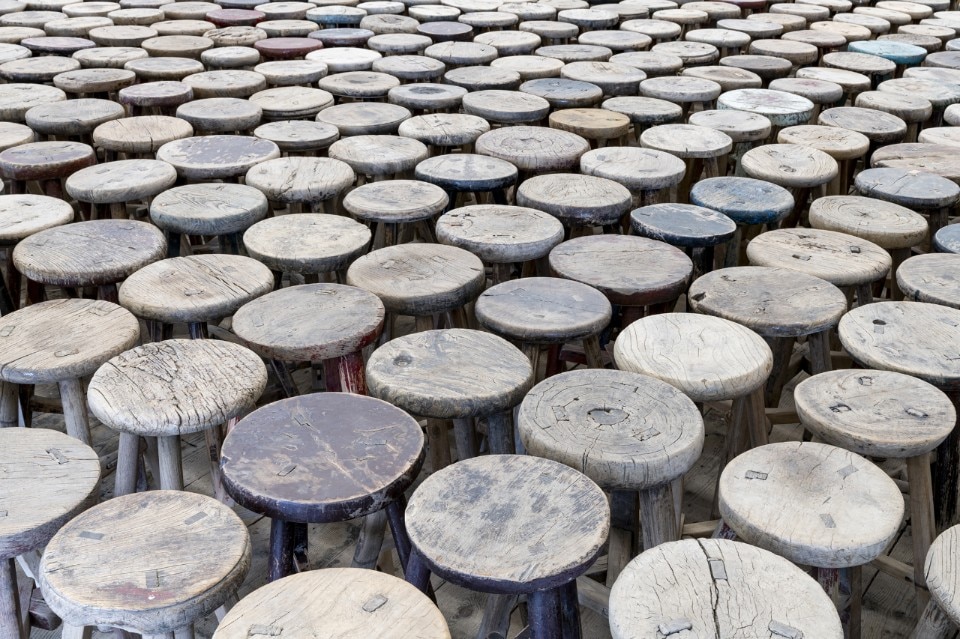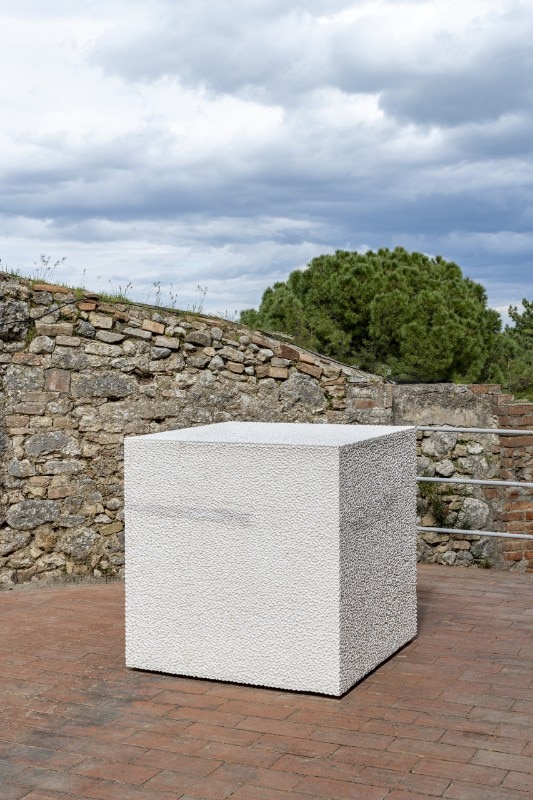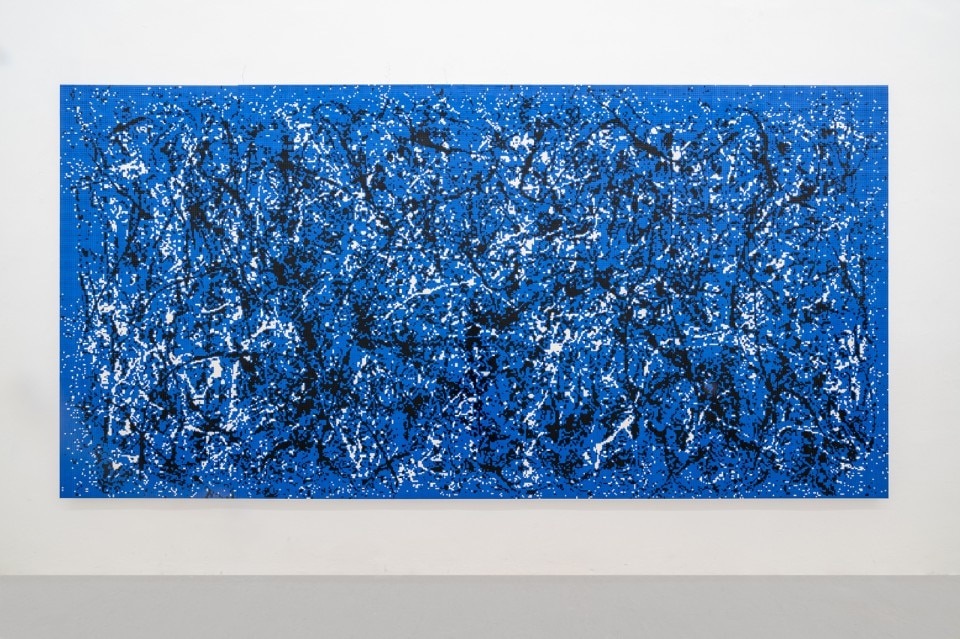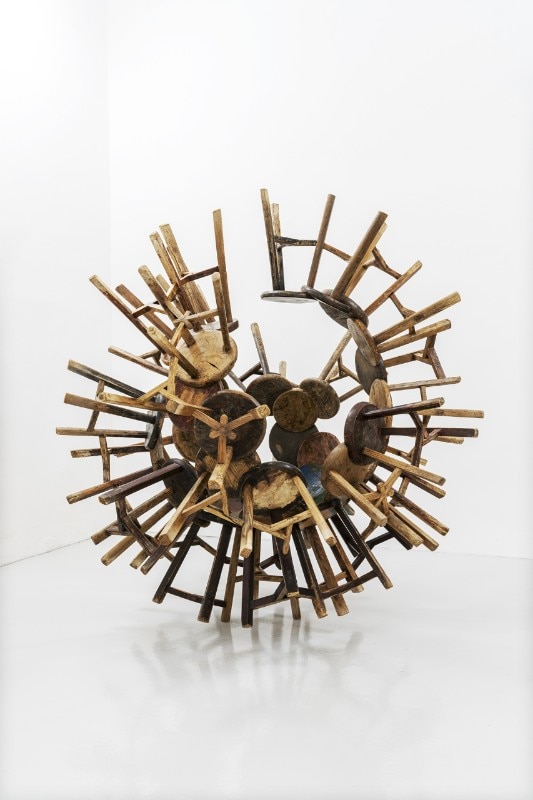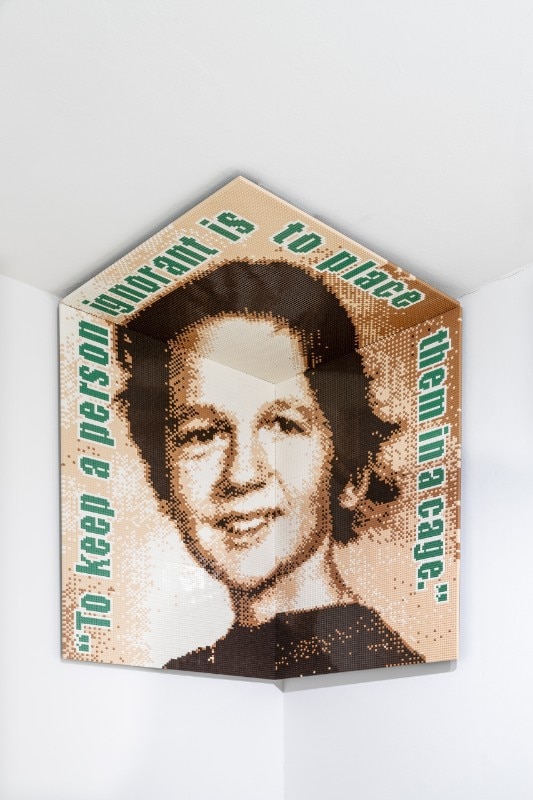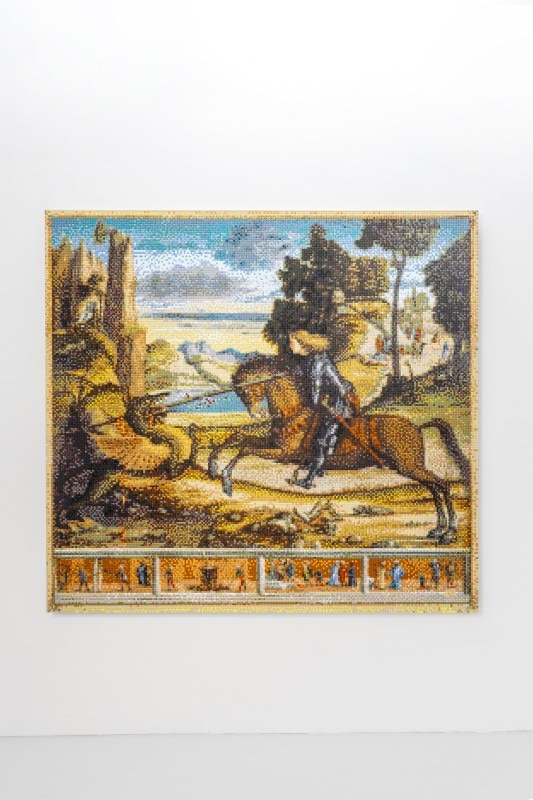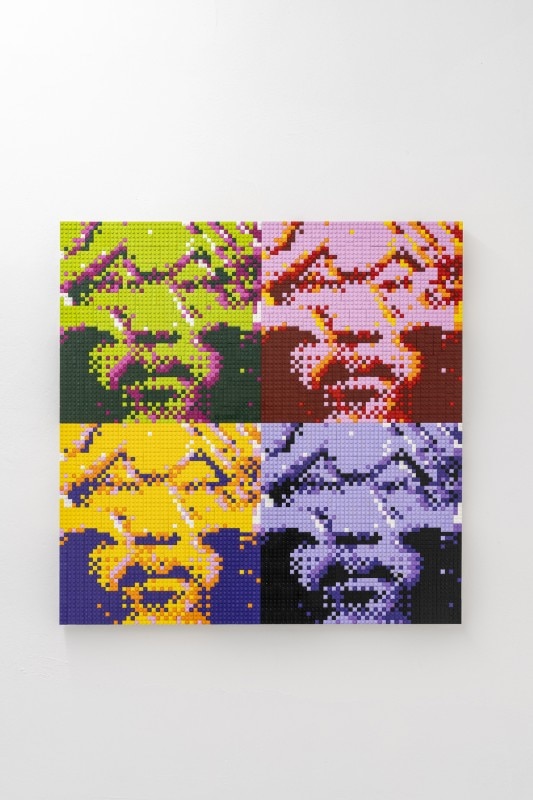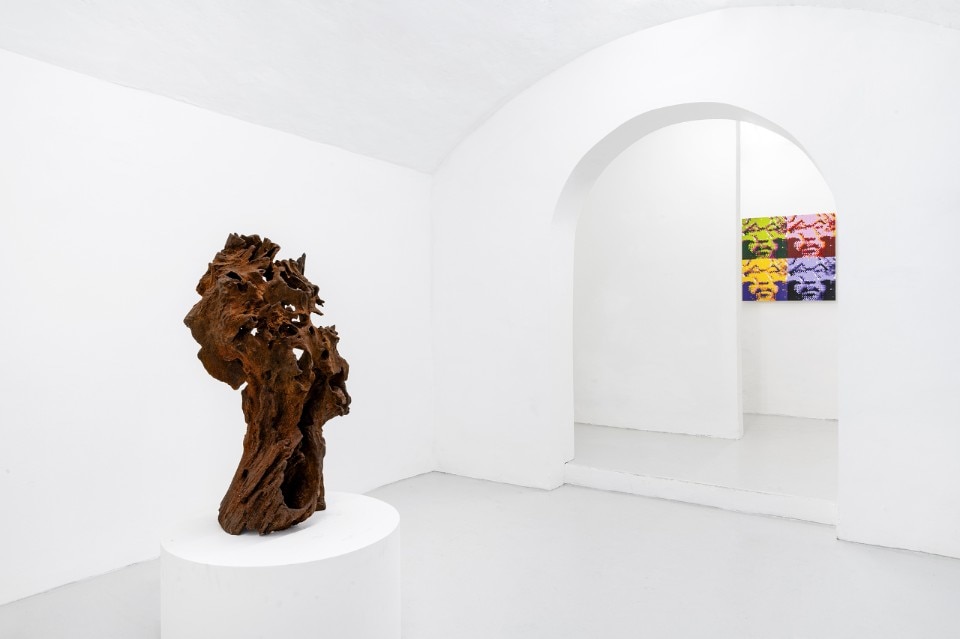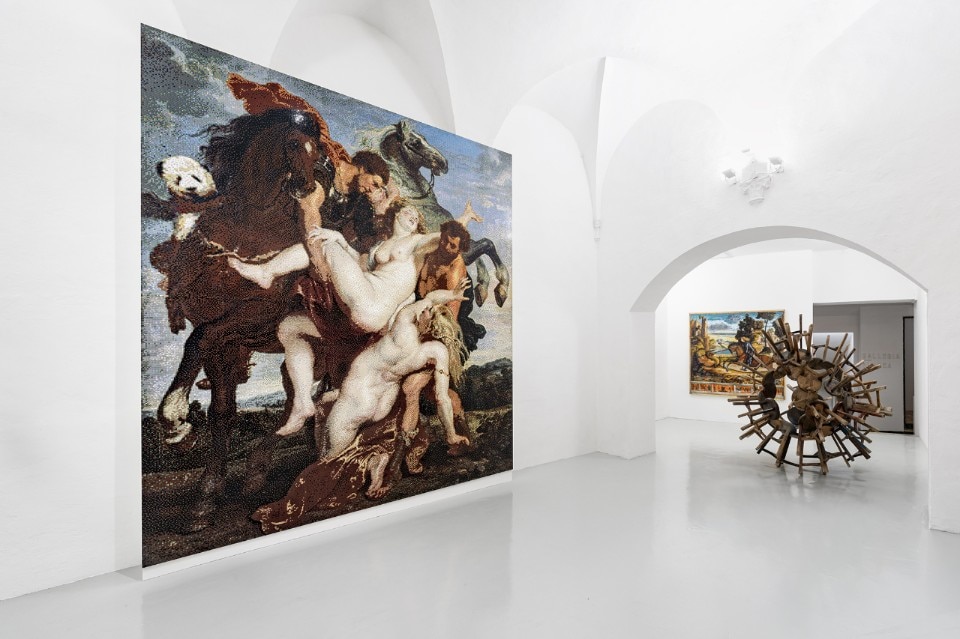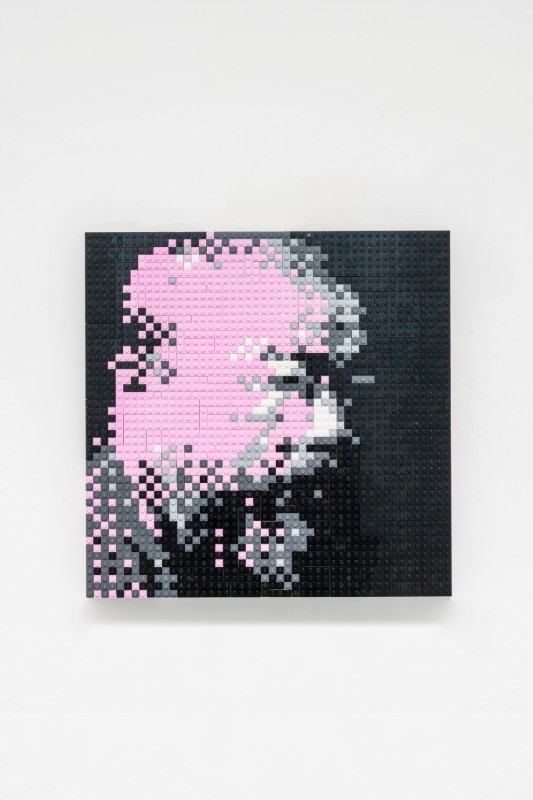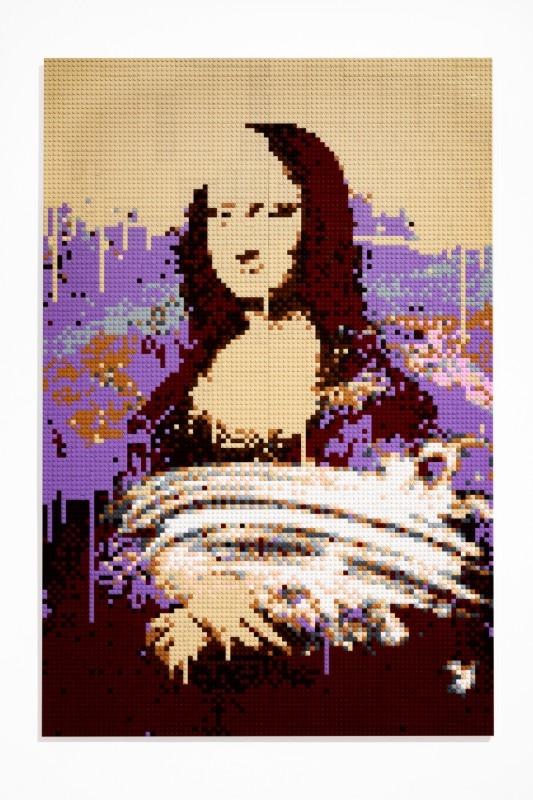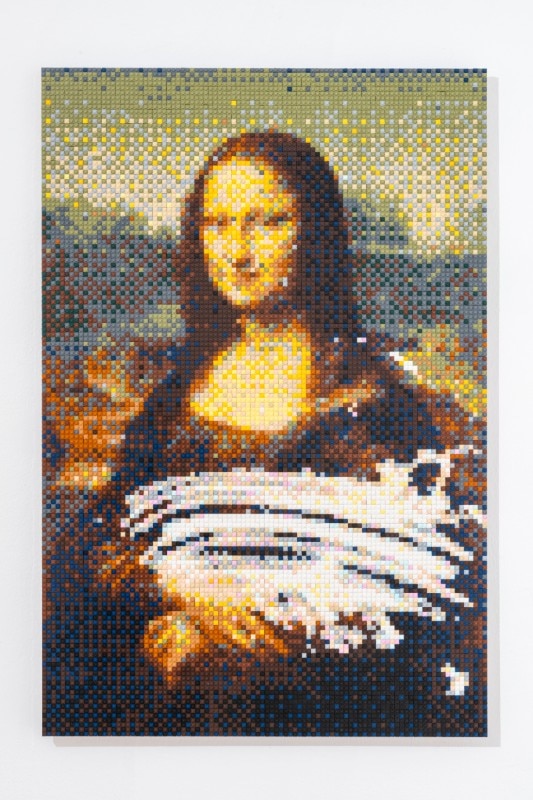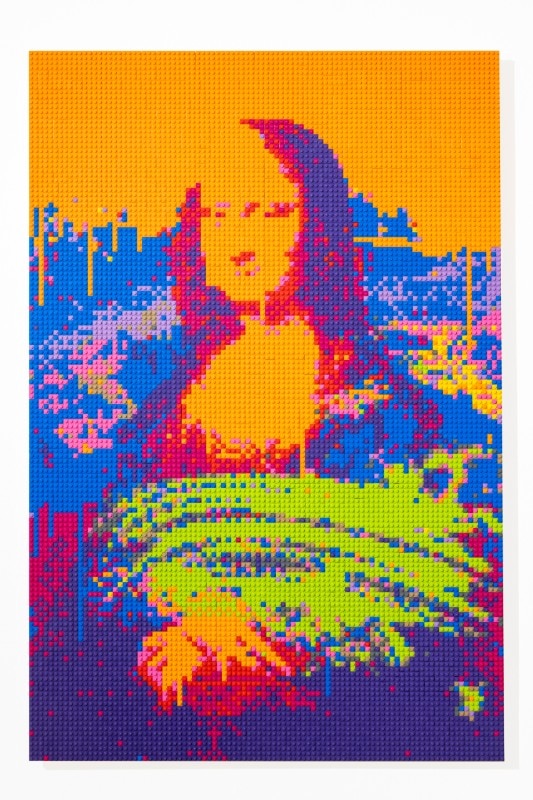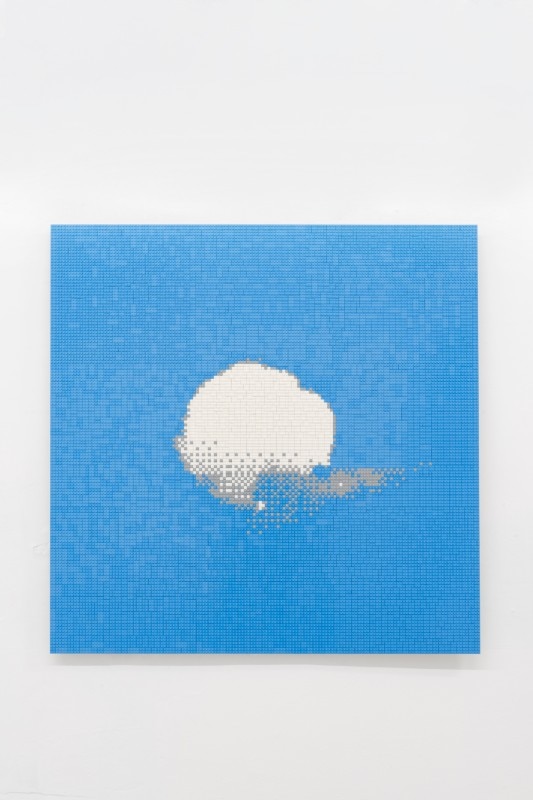«I mean, I’m almost 67 years old…» says Ai Weiwei, and this aside, thrown in with a half-smile, is the key that ultimately helps explain everything: his current state of mind, as well as the tone of the reflections and remarks scattered throughout the dense conversation with Tim Marlow (director of London’s Design Museum and curator of the major 2015 retrospective at the Royal Academy dedicated to Weiwei, the first the dissident artist was able to attend in person since his arrest in 2011) and, finally, in his responses to questions from the audience, who came here to listen to him.
“Here” is the Continua Gallery in San Gimignano, in the province of Siena (Italy), which, twelve years after his debut on Tuscan soil, is once again dedicating an exhibition to him. This museum-like event, which is open to the public until September 15, is designed to trace his trajectory over time, from the second half of the 1990s to the present. At its core is a broad selection of works, including previously unseen pieces, created between 2019 and 2023 using Legos, an unconventional expressive medium that he now favors.
The most impressive piece towers over the guests gathered on the stage of the old movie theater that has been the gallery’s home since 1995. In the presence of an empty audience, yet filled with absences (evoked by the 2,600 old stools of the “Stools” installation), a large reproduction of Leonardo’s Last Supper (over 3 meters high and almost 7 meters long, just slightly smaller than the original), assembled with an infinity of toy bricks, stands out.
The pixel-effect image faithfully reproduces the sacred image except for two details: the bright and decidedly pop colors of the robes worn by the figures, and the playful face of Ai Weiwei that replaces that of Judas. It is a nod to the fate of his father (the poet Ai Qing, who fell victim to madness and was exiled during the Mao era), but also a reminder not to put too much faith in the supposed righteousness of humanity: «Perhaps I too could betray you, as the apostle did with Jesus,» he suggests.
It’s a journey through time with disturbing elements that resonate with the present. At the beginning of the tour, visitors are greeted by plasticized tiles depicting Giorgione’s “Sleeping Venus” (with a crutch next to the Roman goddess of fertility, symbolizing clandestine abortions before abortion was legalized) and Rubens’ “Rape of the Daughters of Leucippus” (with a panda, symbolizing Chinese state power today). Georges Seurat’s “Sunday Afternoon on the Island of La Grande Jatte” is updated with the presence of a refugee woman in Lego form, while four versions of the “Mona Lisa” (à la Andy Warhol’s silkscreens) bear the smudges of an imaginary environmentalist protest. More recent international tensions emerge, such as an image dedicated to the shooting down of a Chinese balloon accused of spying on U.S. soil in February 2023, and a mosaic of bricks immortalizing the gas leak caused by the underwater explosion of the Nord Stream pipeline system in September 2022.
It’s a freedom of criticism and expression that Ai Weiwei openly champions: «We cannot hide, we should not self-censor, we should never be forced to hide our convictions,» the
artist insists. «I am always on the side of rights, especially the right of expression. Even the most foolish and erroneous opinions should be supported». However, the reality seems to be moving in the opposite direction: «The debate becomes polarized, gravitating toward extremes and erasing uncertainties and middle grounds.» Hence the title of his latest exhibition, “Neither Not” (neither this nor that), almost a slogan for the preservation of nuance against the tide of absolute truths.
The debate becomes polarized, gravitating toward extremes and erasing uncertainties and middle grounds.
Ai Weiwei
A total of 35 works are on display: new pieces that explore the processes of digitization and reproducibility of images and knowledge through the fragmentation of their small components. There are also historical works in materials such as porcelain, wood (such as the stools from the Ming and Qing dynasties and the Republican era), marble, and even “Huantou Guo,” made of bamboo, a mythical creature that recalls the tradition of the Chinese dragon. Together, these pieces represent different stages and themes in the artist’s career, as he continues to grapple with the constraints imposed by the art world: «I often tell people I’m fake, but they don’t understand. I have no faith in art; actually, it can be very disappointing. I am almost ashamed to be a part of it. I am just myself, not in competition with anyone, but I recognize the great fortune I have, which is to exhibit and let others know what I do. Even if everything is temporary, everything will pass». And again, «I probably believe more in poetry: life is not reducible to logical, rational patterns; there are elusive dimensions. In the confusion in which we find ourselves, perhaps only a poet can give us comfort and help us find clarity.» In this profession of demythologizing disillusionment, there’s obviously room for politicians and prominent public figures, except for Pope Francis: «I like him, he behaves very respectfully... He surprises me and makes me think.» But Ai Weiwei concludes with a poignant question: «Are we sure that we can really change the world? We continue to be primitive, we divide and fight for stupid reasons, we kill each other while others get rich from arms sales, we kill children, and most likely we will continue to do so in the future. .... But how do we know what will happen in the future?»
Opening image: Mari General view of the exhibition, San Gimignano, 2024, Courtesy: Ai Weiwei Studio and Galleria Continua, Photo by: Ela Bialkowska, OKNO Studio
- Show:
- Ai Weiwei, Neither Nor
- Where:
- Galleria Continua San Gimignano (SI)
- Dates:
- Dal 13 aprile al 15 settembre 2024




